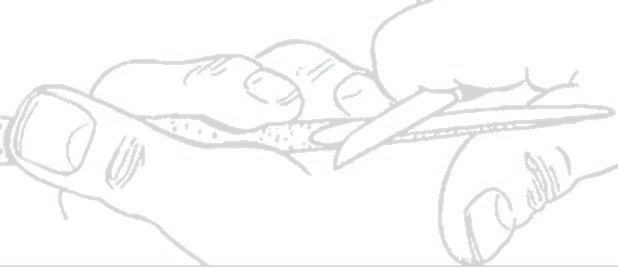What will be needed here is a rotary tool and an assortment of sanding sleeves, and maybe some small diamond burrs. The preferred wood for me is Redwood, but Cedar work too. While precautions must used when power carving Redwood and Cedar, it doesn't "fuzz up" as much when a rotary tool and a sanding sleeve are used; which means that final sanding may not be necessary.
First you must acquire the animal patterns that you wish to carve. Use side profiles. I redraw the animal image to have the legs in the same position, so when carved they are not separated. You can use a copy machine to reduce these images. The quarter near the center of the following photo is there for size reference. After you get the animal images the size that you want them, cut them out. Since I know I'll be making several of these small arks, cover the copied animal images with clear packaging tape on both sides before cutting them out. This will provide a bit more thickness for easier tracing, and give additional durability.
Next, trace the animal patterns on to the wood. I am using three thicknesses of wood, depending on the "thickness" of the animals. I use 3/4" for the heaviest animals (elephant, rhino, hippo), 1/2" for horses, cows, pigs, etc., and 1/4" for the smallest. Notice how I have placed the patterns in reference to the direction of the grain.
It's important to use wood that is a wee bit thicker than you may think is necessary when carving animals. We'll want the animals to have definition in their roundness. We won't want them to appear flat when finished.
After the animals are traced onto the wood, scroll saw them out. I cut right on the line, since the line is always on the out side of the pattern. Notice that I have a piece of plywood taped to the scroll saw table. This piece of wood covers the blade opening, making the cutting easier and not allowing the small animal or the scrap to get caught in the opening.
In the coming posts, I'll focus on several of the animals, and illustrate how I carve them.





No comments:
Post a Comment